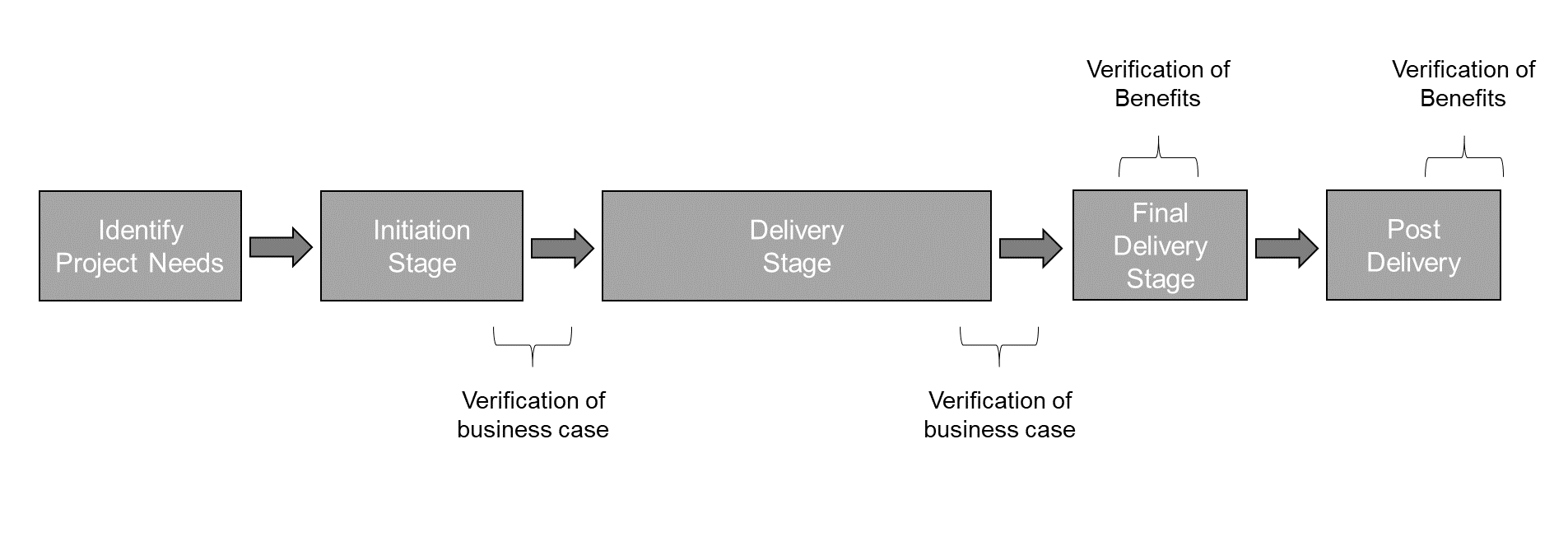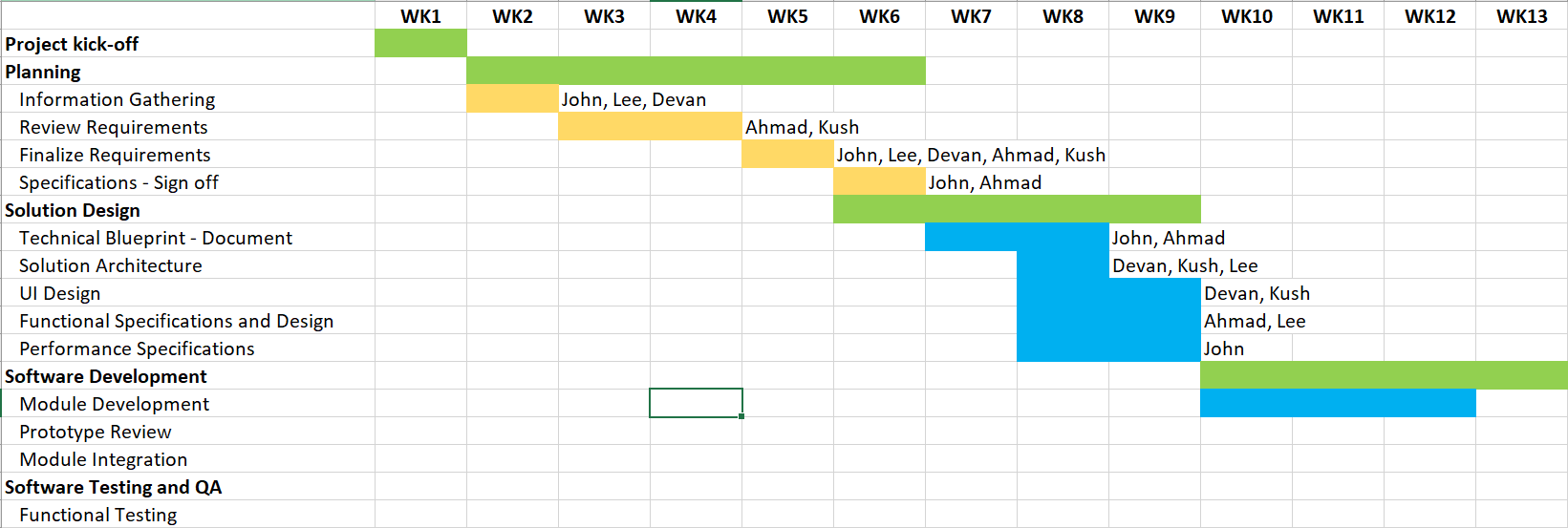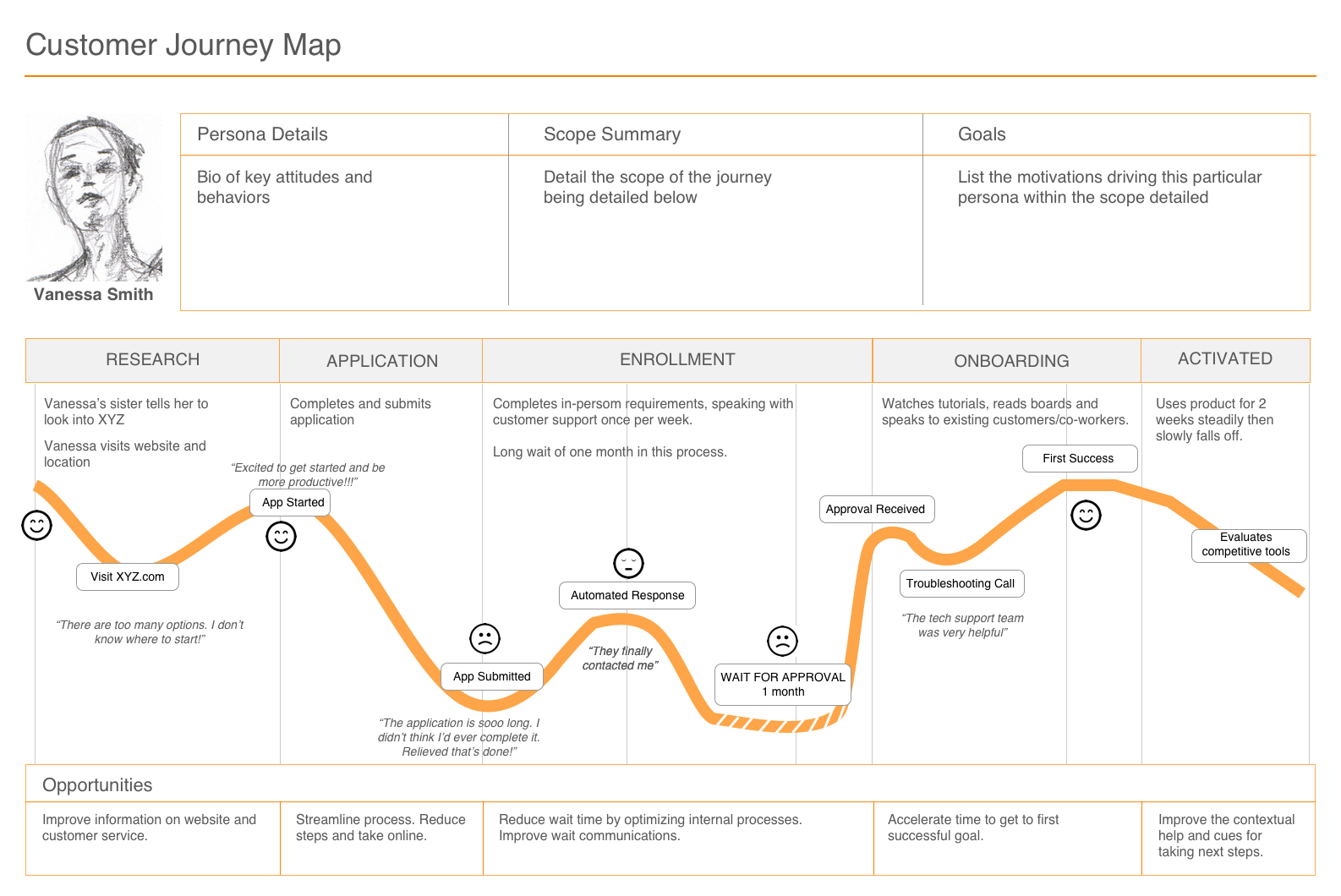2.4.1 Overview
Plan phase involves the development of business case, defining the purpose and objectives, building the project plan and organization structure. The nature of the project will determine the objectives of the project and helps to verify the desirability of the project. These objectives varied between different projects and are measured differently.
Figure below shows the key processes involved in the development of a business case.
Figure 2-3 Development of Business Case
During initiation phase, it is crucial to gain the management commitment in adopting the DevOps approach particularly on defining quality policy and acceptance criteria. This quality policy and acceptance criteria shall be clearly documented and stated to all respective stakeholders as part of the project plan or proposal.
- Quality policy shall be specified as part of the project’s objectives and scope.
- Quality management and processes shall be specified as part of project’s approach.
- Quality acceptance criteria shall be clearly specified as part of the project’s Key Performance Indicators (KPI).
Note: Refer to MAMPU’s Public Sector ICT Project Management (PPrISA) document for detailed project management.
2.4.2 Defining Quality Policy
Quality policy should be identified and defined early during the initial project planning. This approach helps project team or vendors to understand that the management emphasizes not just the functionality scope but also the quality of the system.
Quality policy should include the commitment statement from the management, the requirements or standards to follow, the approach and the key areas to focus.
Note: Refer to Appendix A for a Sample of Quality Policy
2.4.3 Defining and Managing Quality KPIs
Quality key performance indicators should be defined and included into initial project planning document as part of compliance. These KPIs should also be tightly coupled with payment or sign off milestones in order to emphasize to the project team or vendor that quality should not be compromised.
Quality KPIs should include the following aspects:
- Usability and availability of the system such as transaction failure rate, uptime or system availability
- Performance of the system such as user experience, response time, system resource usage
- Security compliance
- Scalability of the system
2.4.4 Quality Management Principles (QMPs)
Quality Management Principles are a set of fundamental beliefs, norms, rules and values that are accepted as true and can be used as a basis for quality management. The QMPs can be used as a foundation to guide an organization’s performance improvement. The following table describes each of the 7 QMPs.
| Principles | Descriptions |
| Customer focus | Organizations depend on their customers and therefore should understand current and future customer needs, should meet customer requirements and strive to exceed customer expectations |
| Leadership | Leaders establish unity of purpose and direction of the organization. They should create and maintain the internal environment in which people can become fully involved in achieving the organization's objectives |
| Engagement of people | People at all levels are the essence of an organization and their full involvement enables their abilities to be used for the organization's benefit |
| Process approach | A desired result is achieved more efficiently when activities and related resources are managed as a process. |
| Improvement | Improvement of the organization's overall performance should be a permanent objective of the organization. |
| Evidence-based decision making | Effective decisions are based on the analysis of data and information |
| Relationship management | An organization and its external providers (suppliers, contractors, service providers) are interdependent and a mutually beneficial relationship enhances the ability of both to create value. |
2.4.5 Planning Tools
During the project planning, the project team should utilize tools such as Gantt Chart to define and clearly visualize the project timeline, deliverables, resources and dependencies for reference.
Another key area that project team should focus on is the customer experience throughout system. Project team should map out the customer journey from their initial touchpoint till the end of system usage and identify the key touchpoints that the project team should focus on. The following table describes examples of planning tools that can be used to assist project planning.
| Tools | Descriptions |
| Gantt Chart | Define and visualize the project timeline, the deliverables, resources and dependencies for the entire project. |
| Customer Journey Map | Visualize the customer experience from the initial contact and through the process of engagement. This helps to identify the touchpoints and defines the priority in improving customer experience. |
Example of a Gantt Chart:
Figure 2-4 Example of a Gantt Chart
Example of a Customer Journey Map:
Figure 2-5 Example of a Customer Journey Map
Customer journey map helps the team to map the user experience when utilizing the system and allows the team to identify the key touchpoints where users emphasize and where the main efforts that the team should be directed to. This will improve overall user experience when using the system and the team is able to prioritize which particular touchpoint that they should improve or put efforts in developing it.
2.4.6 Plan Phase Deliverables
Deliverables for plan phase include:
- Project plan and specifications including quality policy and acceptance criteria (refer to Appendix A)
- Risks management plan




